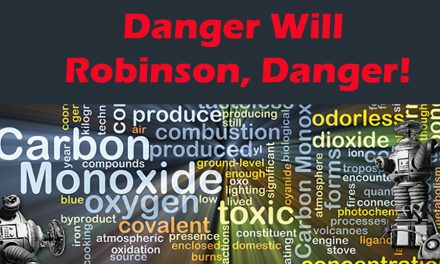“IT’S ALL GREEK TO ME!!”
This is the look your clients have in their eyes when the service technician/comfort consultant starts explaining why they need ductwork modifications in ‘airhead’ terminology. It’s our fault because we sometimes feel the need to speak in ‘technical’ terms to emphasize the issue. We really do not know how to explain the problems in ‘English.’
Years ago, I was guilty of this exact thing. When I first was certified by National Comfort Institute (NCI) in air balancing and diagnostics, I thought I was the king and I spoke to my clients in terms to impress them with my new-found knowledge. I quickly learned I was confusing them. They didn’t understand what I was saying, so they chose not to do the upgrades.
My team and I use analogies and props to discuss airflow issues. This results in a better-educated client and more add-on ductwork upgrades. Is that not a ‘win-win’ scenario we can all use? One thing to note here, 90% of our customers? HVAC systems are located in basements, so our analogies/props are based on that.
In our company, comfort consultants are exposed to more opportunities then service technicians, though the following examples can work for both groups.
The Client Interview
When one of our consultants first visit a potential customer’s home to provide an estimate, he or she performs a client interview.
We use the NCI Residential Customer Survey which we have edited to our needs. These are specific questions that give clues to the consultant as to any airflow issues.
We ask clients to be as honest as possible in their answers because we cannot address their issues if we do not know them.
We say things like, ‘Mrs. Jones, you live here, we do not. You know every little thing that happens in your home. We cannot possibly know what comfort issues you have without your honest input.?

After the interview, the comfort consultant gathers measurements and photos. When they find any abnormalities, they further investigate possible solutions and prepare to speak to the homeowner.
Translating Tech to English
Here are some of our top analogies and props that we use to explain ductwork issues:
Return Ductwork Gaps and Leaks In Basement. We say, ‘Mrs. Jones, we found a lot of return duct leaks and gaps in the basement.’
We then show the client the leaks with a smoke stick and explain:
‘Air follows the path of least resistance so the HVAC system will pull air from the basement gaps and leaks before it pulls all the way from the second floor. We want to pull air from the rooms being heated and cooled, not the basement. Does that make sense?‘
Undersized Return Ductwork. We say, ‘Mrs. Jones, your return ductwork is undersized and not delivering the proper amount of air to the furnace/air handler. The best way to explain this condition is to think about those old type vacuum cleaners with hoses. If you put your hand over the hose, then no air would come out the back of the vacuum. This is what’s happening with your system. No air is going in so no air comes out. Does that make sense?‘
Click below for next page:














Vince did a great job of giving examples of analogies to use to make the consumer understand what we understand without using technical talk. Every contractor should use this article in their own training meetings and come up examples that fit the installations and homes specific to their market area.